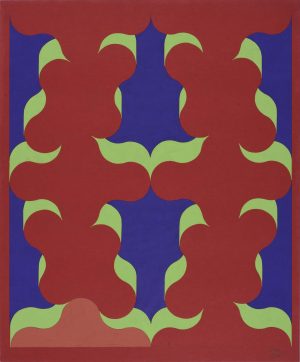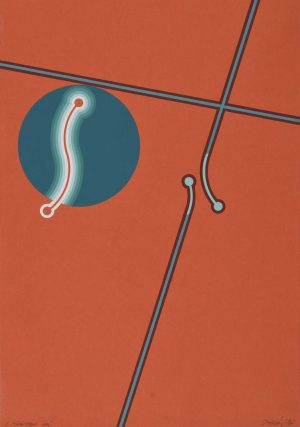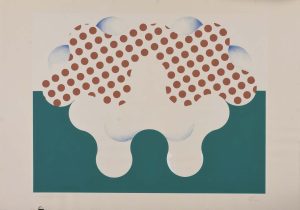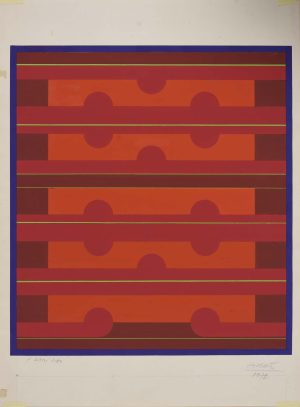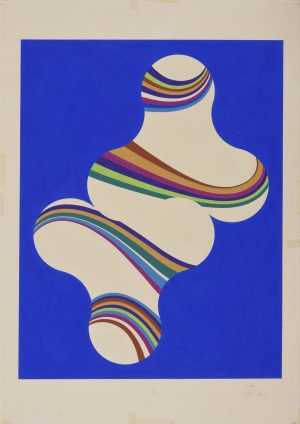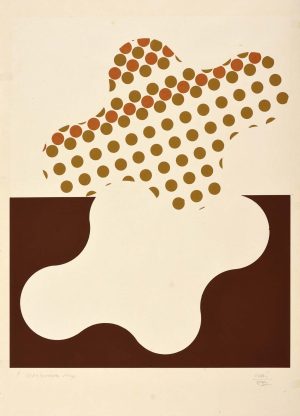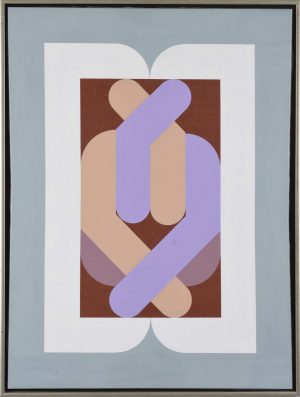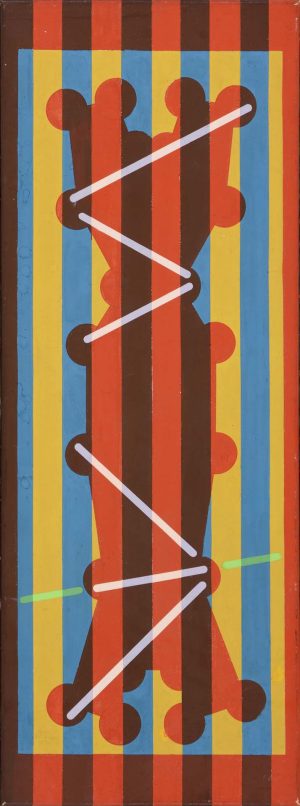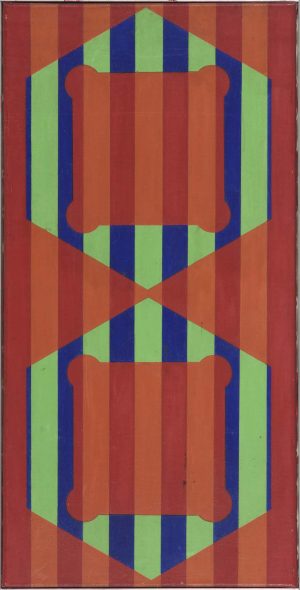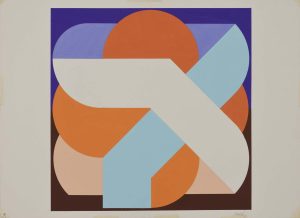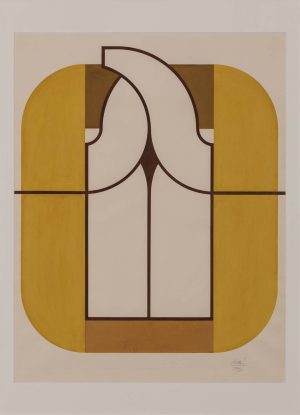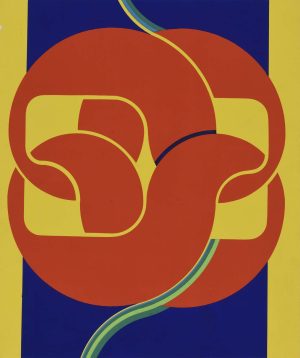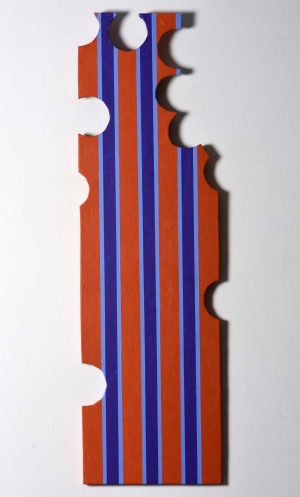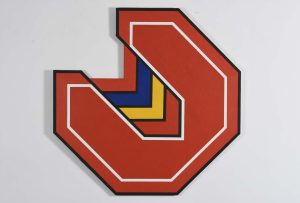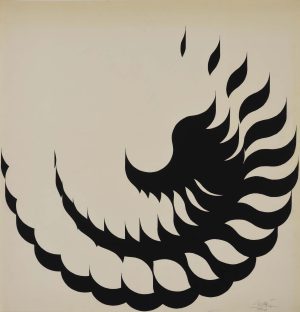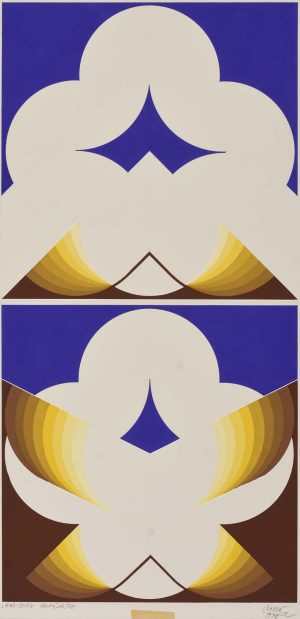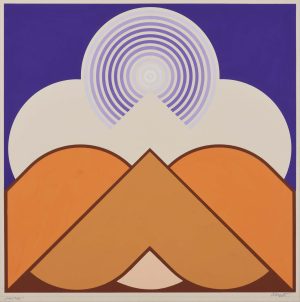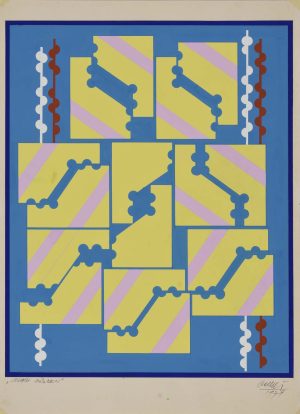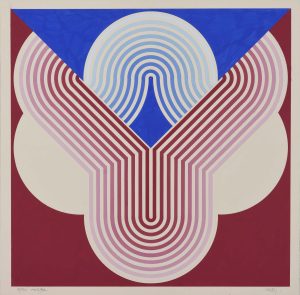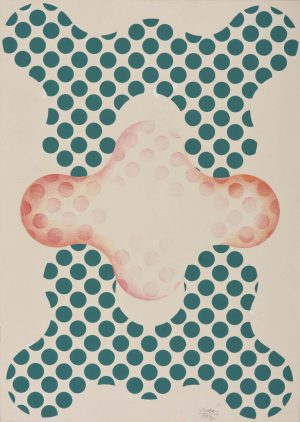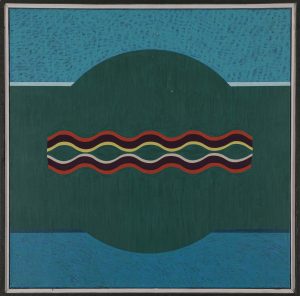
István GELLÉR B.
...it shall...'
- Year(s)
- 1973
- Technique
- tempera on paper
- Size
- 42x60 cm
Artist's introduction
The geometric painting practice of B. István Gellér is unique among the aspirations of the Hungarian Neo-Avant-Garde. The emblematic structures of his 1970s artworks, which were constructed with softer lines, but edited with symmetrical rigour, are typical domestic examples of Pop art-influenced Signal Painting. One of the most critical issues of progressive Hungarian painting in the 1960s was the reconciliation of global trends and local traditions, which notion defined the artistic practice of Gellér as well. His passion for drawing led him as a child to Ferenc Martyn, followed by the free school of Ferenc Lantos. His trip to Western Europe deeply inspired him in the late 1960s. During his visit to London, he got acquainted with the work of Bridget Riley, Frank Stella and Victor Vasarely. Combining his recent international experiences with the local artistic traditions of Pécs, he developed an organic and symbolic geometric language. He sought to create an internationally relevant, locally inspired, but at the same time personally motivated artistic voice. His recurring motifs include the almost anthropomorphic, three-lobed, softened triangle, the "embracing" shapes, and the box-like space enhanced with a sense of depth utilising perspective. He endowed his geometric shapes – which filled the entire surface – with personal meaning far removed from the essence of Geometric Abstraction. He was less interested in theoretical problems than in the lyrical transformation of symbols. He worked on creating a "geometry of personal credibility" based on individual truths. Fanni Magyar
More artworks in the artist's collection »

